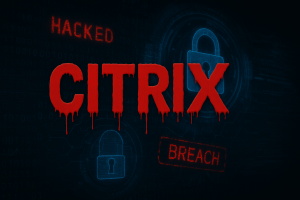
Discover how cyber warfare played a key role in the Iran-Israel conflict and why businesses worldwide need to be ready for the new digital battlefield.
A New Frontline: When Geopolitical Tensions Spill into Cyberspace
Modern war is not merely about missiles aloft or troops on the ground. Nowadays, cyber war is becoming a focal part of warfare. That was clearly evident during the recent escalation of conflict between Iran and Israel, as a burst of cyberattacks was included in the overall confrontation.
These weren’t backburner exercises—they were center-stage in creating disruptions to life as usual, impacting infrastructure, and conveying political signals. For governments and international corporations across the board, this war teaches vital lessons regarding the increasingly salient role of cyber warfare.
The Cyber Timeline: What Happened?
April 2024 – The Tensions Escalate
Following a series of physical altercations and threats to retaliate, the cyber stage was entered. Pro-Iranian groups like “CyberAv3ngers” and other Iran-aligned groups began targeting Israeli critical infrastructure, and pro-Israeli groups responded in turn. State-sponsored attacks and hacktivism grew exponentially.
May 2024 – Infrastructure and Psychological Impact
In May, Iran’s principal websites, media platforms, and government services were targeted by denial-of-service (DDoS) assaults and data leaks. Iranian actors attempted to infiltrate Israeli energy and water infrastructure in the meantime, a move reminiscent of earlier attempts like the 2020 attack on Israel’s water supply grid.
A very disturbing trend was SCADA attacks against industrial process control systems. Sabotage at this level can have physical impacts—power outages, water contamination, et al.
June 2024 – Financial Systems Under Fire
Both nations witnessed attempted invasions of banking and financial institutions. Israeli banks saw increased phishing attacks and logins. Iranian financial websites suffered temporary outages. While not all the attacks succeeded, the intent and quantities were clear: disrupt, destabilize, and intimidate.

Tools of Contemporary Cyber Warfare
- DDoS attacks: Used to overwhelm and knock down essential services, they were used against everything from news websites to telecom operators.
- Phishing and credential harvesting: Used to infiltrate and steal sensitive data from government networks.
- Defacement campaigns: Websites were altered to display propaganda or threats.
- Ransomware and wiper malware: There were reports of attempts to permanently delete data, as opposed to encrypting it for ransom.
- Supply Chain Exploitation: As seen in past attacks globally, criminals are now beginning to target third-party software companies as a backdoor into major systems.
Beyond the Region: Why It Matters Globally
This war was not confined to Iran and Israel alone. Friendly groups on both sides initiated global attacks. US hospitals, European news organizations, and Asian private enterprises all recorded attempted breaches or disruptions. Cyber war does not recognize geography.
Additionally, most of the methods and tools utilized to hack throughout this war were made publicly available on Telegram groups and forums, making them more likely to be reused by unrelated attackers in future operations.
What Businesses Can Learn about the Iran-Israel Cyber Escalation
Regardless of whether your company is based in the Middle East or not, there are real lessons to be learned:
- Critical infrastructure is always at risk. Even manufacturers, logistics companies, and utilities can be in the sights of geopolitics.
- Hacktivism is escalating. Not all are official government-sponsored groups. Ideologically driven hackers can be very destructive.
- Third-party risk is a reality. Attacks generally start through weaker points of your supply chain.
- Cyber deterrence is being crafted. While traditional military retaliation has developed its norms of worldwide engagement, cyberwarfare at present has no global rules of engagement, making these events that much harder to avert and contain.
Prepare for a World Where War Lives Online
The latest cyber spat between Israel and Iran wasn’t a technology story—it was a warning. It demonstrated how today’s modern geopolitics now unfolds on servers and networks, rather than across borders and battlefields.
For companies everywhere, that means one thing: cyber preparedness is not a choice. Regardless of the industry or geography, politically driven cyberattacks are something you must be prepared for as part of your security plan.
The battlefield has shifted. The question is—are we ready?




